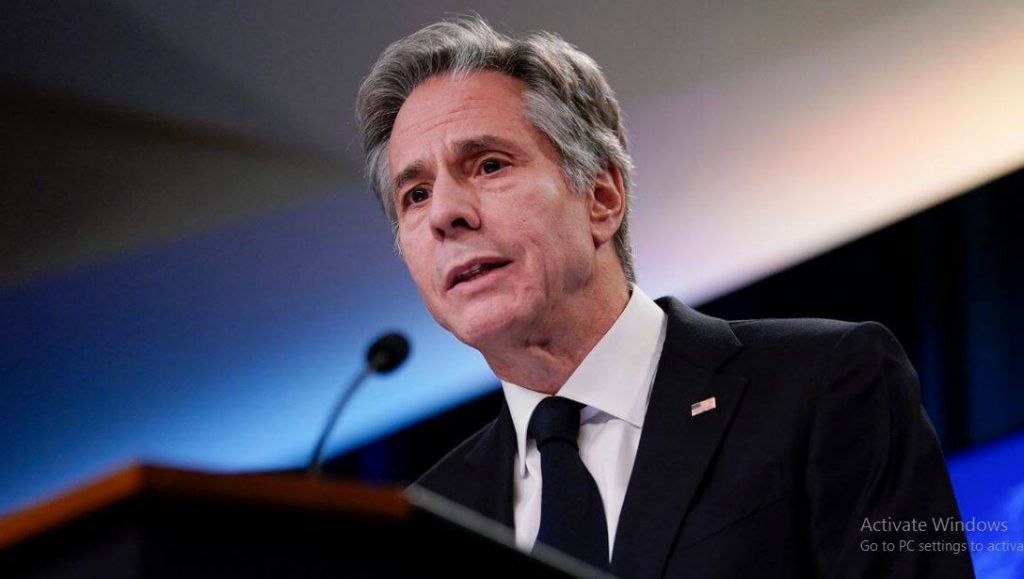Manila: Secretary of State Antony Blinken underscored Washington’s ‘ironclad commitment’ Tuesday to help defend the Philippines in case of an armed attack against its forces after clashes between Chinese and Filipino coast guards in the disputed South China Sea recently turned more hostile.
Blinken, the latest high-level official to visit the United States treaty ally, met his Philippine counterpart Enrique Manalo Tuesday before planned meetings with President Ferdinand Marcos Jr and other top officials in Manila.
President Joe Biden will host Marcos and Japanese Prime Minister Fumio Kishida at a White House summit in April. The three are likely to discuss growing concerns over increasingly aggressive Chinese actions in the South China Sea and North Korea’s nuclear programme.
“We stand with the Philippines and stand by our ironclad defense commitments, including under the Mutual Defense Treaty,” Blinken said in a news conference with Manalo.
“We have a shared concern about the PRC’s actions that threaten our common vision for a free, open Indo-Pacific, including in the South China Sea and in the Philippines’ exclusive economic zone,” Blinken said, using the abbreviation for the People’s Republic of China. He cited “repeated violations of international law and the rights of the Philippines: water cannons, blocking maneuvers, close shadowing other dangerous operations.”
The Chinese coast guard blocked and used water cannons against Philippine vessels in a confrontation two weeks ago that slightly injured a Filipino admiral and four of his sailors near the disputed Second Thomas Shoal.
The March 5 faceoff in the high seas also caused two minor collisions between Chinese and Philippine vessels and prompted Manila’s Department of Foreign Affairs to summon China’s deputy ambassador to convey a protest against the Chinese coast guard’s actions, which the Philippines said were unacceptable.
The Chinese Coast Guard said then that “it took control measures in accordance with the law against Philippine ships that illegally intruded into the waters adjacent to Ren’ai Reef,” the name Beijing uses for Second Thomas Shoal.
The Second Thomas Shoal, which is occupied by a small Philippine navy contingent but surrounded by Chinese coast guard ships and other allied vessels, was the site of several tense skirmishes between Chinese and Philippine coast guard ships in the past year. But Filipino officials said the confrontation earlier this month was particularly serious because of the injuries sustained by its navy personnel and damage to their vessel.
Blinken renewed a warning Tuesday that the US is obligated under a 1951 Mutual Defense Treaty to defend the Philippines if Filipino forces, ships or aircraft come under an armed attack anywhere in the South China Sea.
Both Blinken and Manalo described their countries’ treaty alliance as being on “hyper-drive,” but acknowledged that more could be done. They said efforts to shore up defense ties were not aimed against any country.
Beijing has repeatedly said that Marcos’ decision to allow the expansion of American military presence in the Philippines under a 2014 defence pact could undermine the security of China and the region.
US and Philippine forces plan to hold their largest annual combat exercises in April in the Philippines. The area would include a northern region just a sea away from Taiwan, which China claims as its own territory.
“We reaffirmed our shared view that a strong and capable Philippines would make a formidable ally for the United States,” Manalo said.
Blinken said that “the alliance has never been stronger, but we not only have to sustain that, we have to continue to accelerate the momentum.”
Outside the presidential palace in Manila, dozens of left-wing activists tore a mock US flag in a noisy rally Tuesday to oppose Blinken’s visit and Washington’s involvement in the long-simmering territorial disputes.
Aside from China and the Philippines, Vietnam, Malaysia, Taiwan and Brunei also have overlapping claims in the resource-rich and busy waterway, a key global trade route.
Beijing claims almost the entire South China Sea. In the past decade, China has turned barren reefs into seven islands that now serve as missile-protected island bases — including three with runways — that have bolstered its capability to fortify its territorial claims and patrols.
In response, Washington has been strengthening an arc of military alliances and security ties in the Indo-Pacific, including with the Philippines, Vietnam and other countries at odds with China in the disputed sea.
After China effectively seized another disputed atoll — the Scarborough Shoal off the northwestern Philippines — in 2012, Manila brought its disputes with Beijing to international arbitration and largely won. China, however, rejected the 2016 ruling of the United Nations-backed tribunal that invalidated its expansive claims on historical grounds and continues to defy the decision.
AP
